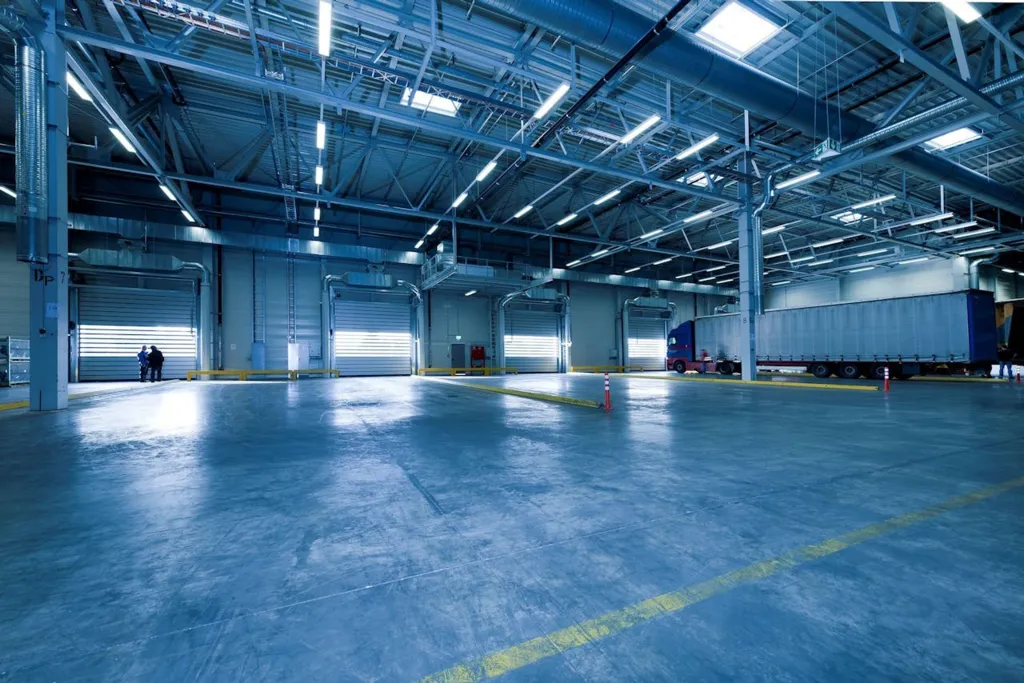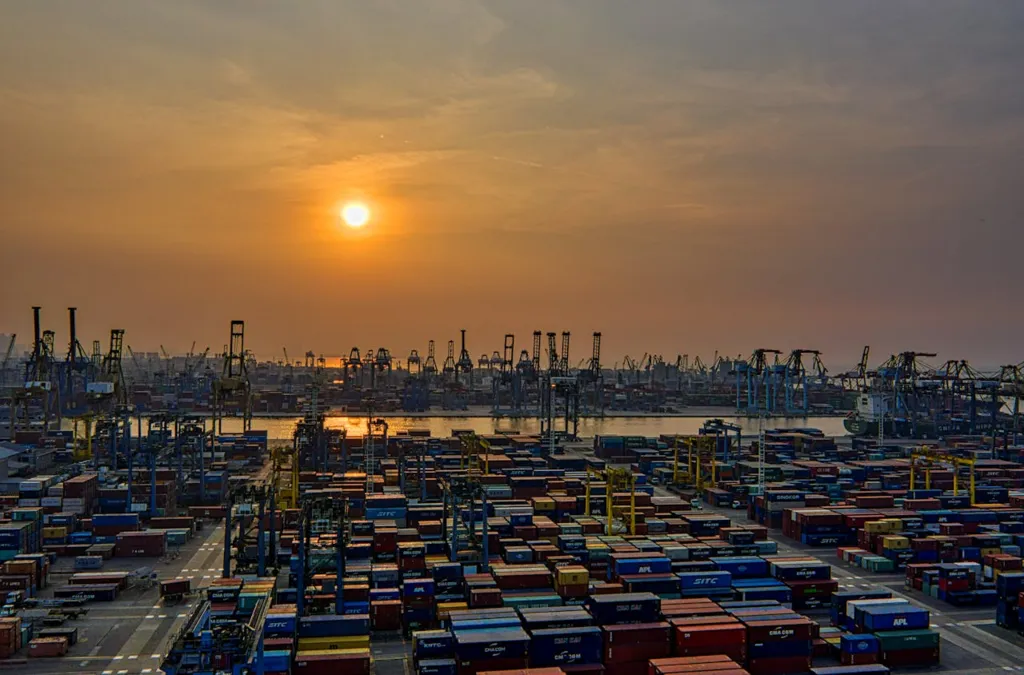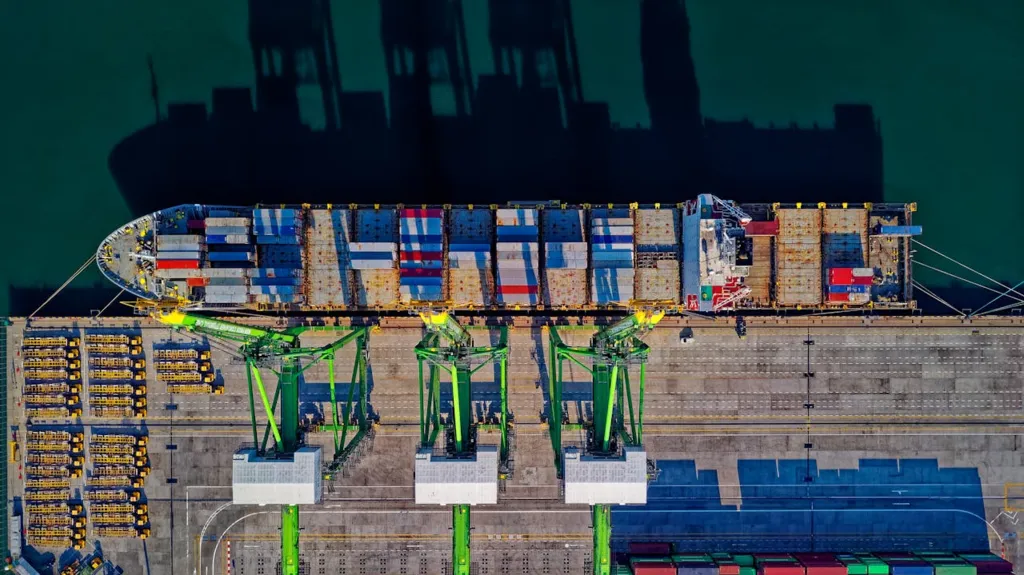The launch of the NX Logistics Eastern Seaboard Logistics Center in Rayong Province, Thailand, marks a pivotal development within the nation's ambitious Eastern Economic Corridor (EEC) initiative. This state-of-the-art facility is strategically positioned to serve as a cornerstone of Thailand's "Thailand 4.0" national strategy, directly supporting the upgrade of its industrial structure towards high-technology and value-added sectors. By offering sophisticated logistics solutions such as Just-in-Time (JIT) and Vendor Managed Inventory (VMI), the center is poised to significantly enhance cross-border and regional supply chain efficiency, particularly for the burgeoning mobility and technology industries.
The investment aligns seamlessly with Thailand's smart logistics and trade goals, as "aviation and integrated logistics" is a designated New S-Curve Industry within the EEC framework. This facility, combined with extensive ongoing and planned multi-modal infrastructure developments in Rayong, positions the province to emerge as a formidable logistics powerhouse within Southeast Asia. The center's operational capabilities, coupled with the broader EEC vision, are set to attract substantial foreign direct investment, boost national competitiveness, and elevate Thailand's standing in global value chains.
Introduction: The NX Logistics EEC Center in Context
The Eastern Seaboard Logistics Center, a new facility operated by NX Logistics Thailand, a subsidiary of Nippon Express Holdings, Inc., commenced operations on July 1, 2025. This strategic investment is situated in the Eastern Seaboard Industrial Estate (ESIE) within Rayong Province, Thailand, a location chosen for its centrality to major industrial activities and its proximity to Laem Chabang Port, the country's largest international seaport. The center encompasses a warehouse area of 4,500 square meters and is equipped with essential features such as a raised-floor platform and six dock levelers, designed to facilitate efficient cargo handling. Its primary mandate is to deliver optimal logistics services, with a specific focus on the needs of mobility and technology companies that are increasingly expanding their operations within the region.
This development is intrinsically linked to Thailand's Eastern Economic Corridor (EEC), a flagship initiative of the Thai government. The EEC is a special economic zone spanning three eastern provinces—Chachoengsao, Chonburi, and Rayong—and serves as the core of the nation's "Thailand 4.0" national strategy. Launched with the ambitious goal of transforming Thailand's industrial landscape, the EEC aims to attract significant foreign direct investment (FDI), enhance infrastructure, and provide a comprehensive suite of tax incentives to foster growth in high-technology and next-generation industries. The establishment of advanced logistics hubs like the NX Logistics center is a critical component of this broader national vision, facilitating the seamless flow of goods and supporting the sophisticated supply chain requirements of the targeted industries.
1. What role does the new NX Logistics center play in Thailand’s EEC strategy?

The NX Logistics Eastern Seaboard Logistics Center plays a fundamental role in realizing Thailand’s Eastern Economic Corridor (EEC) strategy, acting as a direct enabler of the "Thailand 4.0" national agenda. Rayong Province, where the center is located, is explicitly designated as the core of the EEC. This strategic placement directly supports the government's objective to upgrade the country's industrial structure by attracting and sustaining high-value industries. The facility resides within the Eastern Seaboard Industrial Estate (ESIE), a major industrial hub in Rayong that hosts over 500 foreign manufacturers, many of which are Japanese and global enterprises. This concentration of international businesses aligns perfectly with the EEC's goal of drawing substantial foreign direct investment and stimulating growth in next-generation sectors. Furthermore, the center’s proximity to Laem Chabang Port, Thailand's largest international seaport, is crucial for optimizing supply chain operations for companies within the EEC, ensuring efficient import and export capabilities.
The center also significantly contributes to the EEC's broader ambition of establishing Thailand as a premier regional hub for high-technology industries, innovation centers, and advanced manufacturing. By providing optimal logistics services specifically tailored for mobility and technology companies, the NX Logistics center directly supports this vision. Nippon Express Holdings has articulated its aim for NX Logistics Thailand to become a key logistics player in the region, committed to supporting customer businesses with high-quality global logistics platforms. This commitment is in direct harmony with the EEC's overarching objective of enhancing regional competitiveness and transforming the eastern part of Thailand into a dynamic international economic zone.
The presence of the NX Logistics Center underscores a crucial mechanism: logistics serves as a fundamental enabler for industrial transformation. The EEC's primary objective is to shift Thailand's industrial base towards high-tech and value-added sectors. Achieving this transformation necessitates highly efficient and sophisticated logistics infrastructure capable of supporting complex manufacturing processes, precise just-in-time deliveries, and intricate global supply chains. The NX Logistics Center, with its specialized focus on JIT and VMI services for mobility and technology companies, provides precisely this critical enabling infrastructure. Consequently, the center is not merely a passive recipient of growth spurred by the EEC; it is an active, indispensable component that facilitates the EEC's capacity to attract and sustain the targeted high-tech industries, thereby acting as a direct causal factor in the overall industrial upgrade strategy.
Furthermore, a significant investment by a global logistics leader like Nippon Express Holdings carries a broader implication: it validates the long-term vision of the Thai government. Such a commitment by a multinational corporation signals robust confidence in the economic viability of the EEC as a regional manufacturing and logistics base. This move can serve as a powerful signal to other potential foreign direct investors, demonstrating that the EEC's incentives and infrastructure development plans are translating into tangible, operational assets. This validation reinforces the government's strategic blueprint and has the potential to create a positive feedback loop, attracting further investments and accelerating the corridor's development.
2. How will this facility enhance cross-border and regional supply chain efficiency?

The new Eastern Seaboard Logistics Center is engineered to significantly enhance both cross-border and regional supply chain efficiency through its specialized services and strategic location. A core aspect of its operational model is the optimization of supply chain operations to meet sophisticated demands, notably Just-in-Time (JIT) logistics and Vendor Managed Inventory (VMI). JIT logistics, a system that ensures goods are delivered precisely when and where they are needed, plays a vital role in minimizing inventory holding costs and reducing waste. This is particularly critical for industries characterized by high inventory costs or those requiring lean manufacturing processes. Concurrently, VMI, an inventory management system where suppliers take responsibility for managing inventory levels and placing replenishment orders on behalf of their customers, guarantees continuous supply and alleviates the buyer's inventory management burden. These advanced services foster stronger supplier-customer relationships and improve overall supply chain predictability.
The center's strategic location near Laem Chabang Port, Thailand's largest international seaport, provides exceptional connectivity for the movement of goods, directly impacting international and regional trade flows. This proximity facilitates seamless import and export operations, leading to reduced transit times and costs for cross-border trade. Situated within the Eastern Seaboard Industrial Estate (ESIE), which hosts over 500 foreign manufacturers, the center is centrally positioned within customers' supply chains. This supports the rapidly increasing logistics demand driven by the establishment of new supply chains in the region, enabling efficient regional distribution and seamless integration into existing manufacturing ecosystems.
The facility is specifically designed to support the burgeoning logistics needs of mobility and technology companies operating within the EEC. These sectors typically require precise, high-frequency deliveries and intricate inventory management. By offering JIT and VMI, the center caters to the advanced logistics requirements of these global enterprises, allowing for seamless integration into their sophisticated global supply chains.
The combination of JIT and VMI services with the strategic location near Laem Chabang Port creates a powerful synergy that leads to significant cost reduction and operational agility. JIT and VMI inherently reduce inventory holding costs, minimize waste, and improve cash flow for businesses. The immediate proximity to a major international port then ensures that the physical movement of goods, which is essential for these lean systems, is executed with speed, reliability, and cost-effectiveness. This combined effect markedly enhances operational agility, enabling companies to respond more rapidly to market demands and supply chain disruptions. This capability, in turn, makes Thailand a more attractive and competitive location for high-volume, high-value manufacturing and distribution.
This development also provides a significant competitive advantage by elevating Thailand's value proposition in global supply chains. In today's intensely competitive global manufacturing landscape, supply chain efficiency is a critical differentiator. By providing advanced logistics capabilities such as JIT and VMI, which are typically indicative of mature and sophisticated industrial ecosystems, the NX Logistics Center elevates Thailand's overall offering. This strategic move transforms Thailand from merely a low-cost manufacturing base into a sophisticated hub capable of supporting complex, high-tech production with optimized logistics. This transformation is instrumental in attracting higher-value foreign direct investment and strengthening Thailand's role in intricate global supply chains.
3. What industries or sectors will benefit most from the new logistics hub?

The Eastern Seaboard Logistics Center is primarily designed to serve the specific needs of mobility and technology companies. These sectors have experienced significant expansion into the Rayong region in recent years, driving a rapid increase in logistics demand. The center's specialized services directly address the complex and evolving supply chain requirements inherent in these industries.
Beyond these primary beneficiaries, the logistics hub will have a broader impact on the EEC's targeted "S-Curve Industries." The EEC initiative identifies 12 next-generation industries that are eligible for promotion and incentives, forming the bedrock of Thailand's industrial transformation. These include: next-generation automotive, electronics, robotics & automation, digital, aviation and integrated logistics, biotechnology, high-value and medical tourism, future food industry, biochemical & biofuel, medical & comprehensive healthcare, defense, and education and human resource development. The center's advanced JIT and VMI services are crucial for supporting the sophisticated supply chain needs of high-tech manufacturing across many of these S-Curve industries.
The enhanced logistics infrastructure provided by the NX center complements the comprehensive investment incentives offered by the EEC framework. These incentives include significant tax benefits, such as corporate income tax exemptions, import duty relief, and potential tax holidays of up to 15 years. Non-tax incentives, such as streamlined business establishment processes, expedited permitting, and flexible land utilization, further enhance the EEC's appeal. By reducing operational costs, improving efficiency, and ensuring reliable supply chains, facilities like the NX center make the EEC a more attractive destination for foreign direct investment. The EEC's explicit focus on improving infrastructure, including industrial parks, and providing tax incentives is aimed at promoting industry growth in sectors such as automotive, aerospace, and electronics.
The EEC's ambition to become a hub for "high-technology industries, innovation centers, and advanced manufacturing" is intrinsically linked to the availability of world-class logistics. Industries like next-generation automotive, electronics, and robotics operate with highly complex, global supply chains that demand precision, speed, and reliability through systems like JIT and VMI. Without facilities such as the NX Logistics Center, capable of handling these sophisticated requirements, the incentives offered by the EEC alone might not be sufficient to attract and retain these specific high-value industries. This demonstrates a critical interdependency: the center represents a prerequisite for the full realization of the EEC's industrial transformation goals.
Furthermore, by specifically targeting "mobility and technology companies" and supporting "new supply chains to be established in future", the NX Logistics Center is not merely addressing current industrial needs but is actively positioning Thailand's industrial base to align with future global economic and technological trends. Mobility (e.g., electric vehicles, autonomous vehicles) and advanced technology (e.g., semiconductors, AI hardware) are rapidly evolving sectors that are expected to drive significant future economic growth. Investing in logistics infrastructure tailored to these industries ensures that Thailand remains competitive and relevant in the long term, enabling it to climb up global value chains, capture more value-added tasks, and potentially escape the middle-income trap. This represents a strategic future-proofing of the Thai economy.
Table 2: Thailand's EEC Targeted Industries and Their Logistics Relevance
| Targeted Industry (from EEC's S-Curve list) | Relevance to Logistics (Why advanced logistics are crucial) |
|---|---|
| Next-generation automotive | Complex global supply chains, Just-in-Time (JIT) for assembly lines, high-value components, often requires specialized handling. |
| Electronics | High-value, sensitive components, rapid obsolescence, demanding JIT/VMI for fast market entry and inventory control. |
| Robotics & automation | Precision parts, global sourcing, need for efficient inbound logistics for manufacturing and outbound for distribution. |
| Digital | While less focused on physical goods, relies on robust digital infrastructure and data center logistics; physical hardware for infrastructure. |
| Aviation and integrated logistics | Directly benefits from and contributes to advanced logistics infrastructure; requires specialized handling for aerospace components. |
| Biotechnology / Medical & comprehensive healthcare | Temperature-controlled logistics, cold chain management, strict regulatory compliance, rapid delivery for critical supplies. |
| Future food industry / Biochemical & biofuel | Efficient transport of raw materials and finished products, often with specific storage (e.g., temperature, humidity) and handling requirements. |
| Defense | Secure, reliable, and often time-sensitive logistics for specialized equipment. |
| High-value and medical tourism | Support for specialized equipment, consumables, and potentially patient transport logistics. |
| Education and HRD | Indirectly benefits from improved connectivity and infrastructure that attracts talent and educational institutions. |
4. How does this investment align with Thailand’s smart logistics and trade goals?

The NX Logistics Eastern Seaboard Logistics Center aligns closely with Thailand’s smart logistics and trade goals under the Eastern Economic Corridor (EEC) strategy. As one of the EEC’s 35 "New S-Curve Industries," aviation and integrated logistics is a government priority, aimed at boosting intelligent logistics as a national growth engine. The EEC seeks to upgrade infrastructure, cut transport costs, and drive industrial expansion—core to advancing logistics capabilities.
A key pillar, the EEC Smart City initiative, promotes IoT, AI, and 5G integration to optimize traffic, energy use, safety, and services, creating efficient, sustainable urban zones. While specific technologies at the NX Center aren't detailed, its focus on advanced services like JIT and VMI depends on real-time tracking and data analytics—hallmarks of smart logistics. These are supported by broader EEC digital infrastructure enhancements.
The investment also supports Thailand’s goal of reaching 2 trillion baht in annual trade by 2027. Driven by rising e-commerce demand, Thailand is prioritizing automation, route optimization, and real-time logistics tracking. Initiatives like the blockchain-based National Digital Trade Platform (NDTP) aim to digitize trade, speed up cross-border transactions, and boost SME access to finance. The EEC also offers attractive incentives, such as R&D import duty exemptions and tax deductions for tech-focused investments.
Thailand’s smart logistics strategy combines physical and digital infrastructure to create an interconnected ecosystem. The NX Center’s capabilities reflect and reinforce this shift, enhancing the country’s global competitiveness.
Strategically, the investment also strengthens resilience amid global trade uncertainty. Through infrastructure and digital upgrades—backed by a $15 billion stimulus—Thailand is positioning itself as a reliable, tech-enabled logistics and manufacturing hub, appealing to firms seeking to diversify away from traditional supply chain centers like China.
5. Could this hub position Rayong as a logistics powerhouse within Southeast Asia?

Rayong Province is strategically positioned as the core of the Eastern Economic Corridor (EEC), a designation that underpins its potential to become a leading logistics powerhouse in Southeast Asia. The province is home to the Eastern Seaboard Industrial Estate (ESIE), which is recognized as the "largest industrial hub in Rayong Province, featuring a concentration of more than 500 Japanese and other foreign manufacturers". This existing industrial density, coupled with its advantageous location near Laem Chabang Port, Thailand's largest international port, provides a significant strategic advantage for logistics operations.
The emergence of Rayong as a logistics powerhouse is further bolstered by extensive ongoing and planned infrastructure developments. The EEC Action Plan on Infrastructure and Public Utilities (2023-2027) outlines significant projects for Rayong, all aimed at enhancing connectivity and transforming the EEC into a major economic hub in Asia. Specific projects include the development of the Map Ta Phut seaport, the implementation of high-speed railways, and the construction of dual-track rail systems linking Si Racha (Chonburi) with Map Ta Phut (Rayong). Further plans include a high-speed railway connecting Rayong, Chonburi, and Trat provinces. Additionally, the expansion of U-Tapao Airport, located near Rayong, is projected to handle 60 million travelers per year, significantly boosting air cargo capacity and connectivity for high-value goods. These infrastructure developments are anticipated to generate substantial employment opportunities and contribute significantly to the annual GDP.
The NX Logistics center, with its advanced services, leverages this advantageous location and the surrounding industrial and infrastructural developments. The combined effect of sophisticated logistics facilities like the NX center and the massive government investment in multi-modal infrastructure—spanning sea, rail, and air—within Rayong effectively addresses existing logistics bottlenecks for businesses. This integrated approach enhances the competitiveness of high-tech industries, attracts further investment, and firmly positions Rayong as a critical node for regional trade and investment. The EEC's overarching goal to improve regional and global trade by enhancing infrastructure directly positions Rayong as a key gateway for international commerce.
The NX Logistics Center is not an isolated private sector investment but a critical component within a much larger, coordinated government-led infrastructure and economic development strategy for Rayong. The center's operational efficiency, particularly its JIT and VMI capabilities, is significantly amplified by the parallel development of major seaports (Map Ta Phut, Laem Chabang), high-speed and dual-track railways, and airport expansions (U-Tapao). This creates a powerful synergistic effect where each infrastructure component enhances the utility and impact of the others. This coordinated approach is transforming Rayong into a truly integrated multi-modal logistics hub rather than just a collection of disparate facilities, which is fundamental to its potential as a powerhouse.
Rayong's strategic location at the core of the EEC, coupled with its comprehensive, multi-modal infrastructure development (sea, rail, air), positions it as more than just a domestic logistics hub. The planned rail linkages, including high-speed rail connections to other provinces and potential future links to Cambodia, Laos, Myanmar, and Vietnam, suggest an ambition to serve as a vital gateway connecting mainland Southeast Asia to global markets via its deep-sea ports and expanded air cargo capabilities. This could enable Rayong to become a pivotal regional transshipment and distribution center, potentially challenging established logistics hubs in Southeast Asia by offering a highly efficient and integrated alternative for regional and international trade flows.
Read Also: Thailand Logistics Sector Dynamics: EEC Leads Growth
Conclusion and Strategic Outlook
The NX Logistics Eastern Seaboard Logistics Center represents a critical strategic asset for Thailand, embodying the nation's commitment to industrial transformation and enhanced global competitiveness. This analysis has demonstrated how the center directly supports the Eastern Economic Corridor's (EEC) ambitious industrial upgrade, significantly enhances supply chain efficiency through advanced services like JIT and VMI, and provides crucial logistical support for key high-tech sectors such as mobility and technology. Furthermore, the investment aligns seamlessly with Thailand's smart logistics and trade digitalization goals, contributing to a holistic digital transformation of its trade infrastructure. Critically, the center's establishment, in conjunction with the massive, coordinated multi-modal infrastructure developments in Rayong, positions the province to emerge as a formidable logistics powerhouse within Southeast Asia.
The long-term implications of this development are profound for Thailand. It is poised to attract increased foreign direct investment, elevate the nation's global competitiveness, and facilitate the successful realization of its "Thailand 4.0" industrial upgrade strategy. By enabling Thailand to capture more value-added tasks within global value chains, these advancements could significantly contribute to the nation's efforts to escape the middle-income trap. For Southeast Asia, Rayong's emergence as a critical multi-modal logistics gateway has the potential to influence regional trade patterns and reconfigure supply chain configurations, offering a highly efficient and integrated alternative for regional and international trade flows.
Based on these findings, several recommendations can be put forth for key stakeholders:
- For Potential Investors and Businesses: The EEC, particularly Rayong, presents compelling opportunities for establishing manufacturing and distribution hubs. Businesses should strategically leverage the advanced logistics infrastructure and comprehensive incentives offered. A focus on synergistic integration with existing and planned multi-modal infrastructure will maximize operational efficiencies and competitive advantages.
- For Policymakers (Thai Government): Continued investment in digital infrastructure and the refinement of regulatory frameworks, such as the National Digital Trade Platform (NDTP), are essential to fully capitalize on the physical logistics assets. Furthermore, sustained efforts in skilled workforce development are crucial to meet the evolving demands of advanced logistics and high-tech industries, ensuring a robust talent pipeline.
- For Logistics Providers: The EEC offers significant opportunities for collaboration and expansion. Logistics providers should explore avenues for developing and implementing smart logistics solutions, offering specialized services tailored to the specific needs of the targeted S-Curve industries, and integrating their operations with the broader multi-modal network to enhance regional connectivity.







